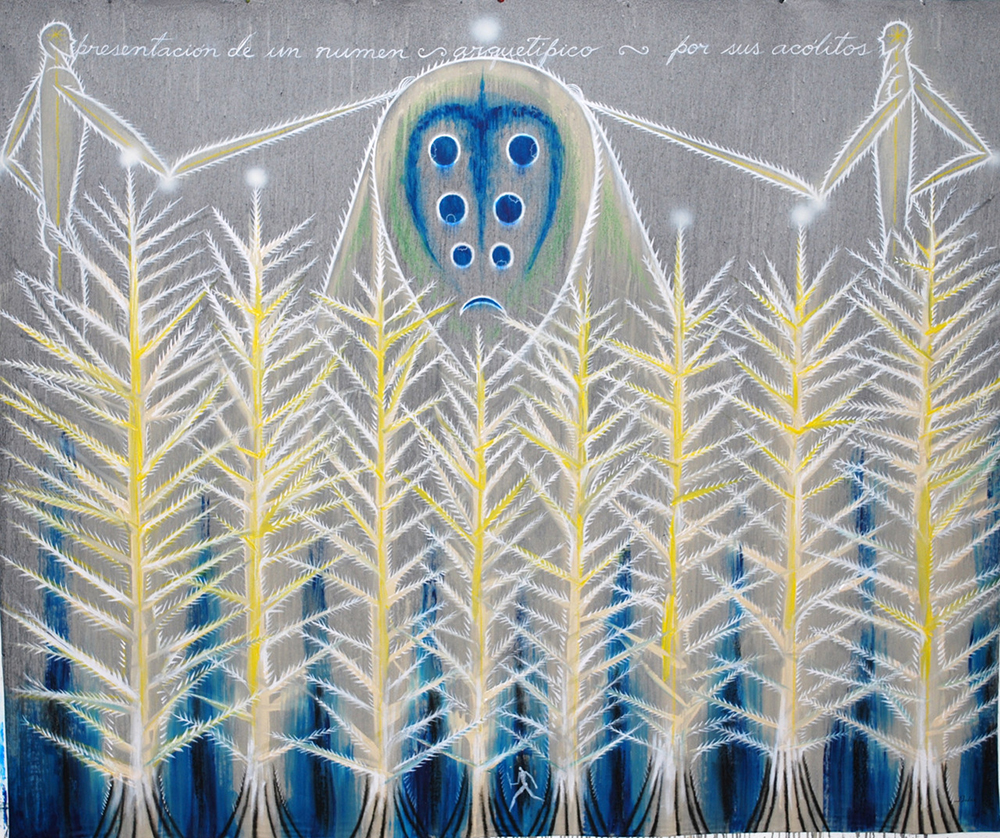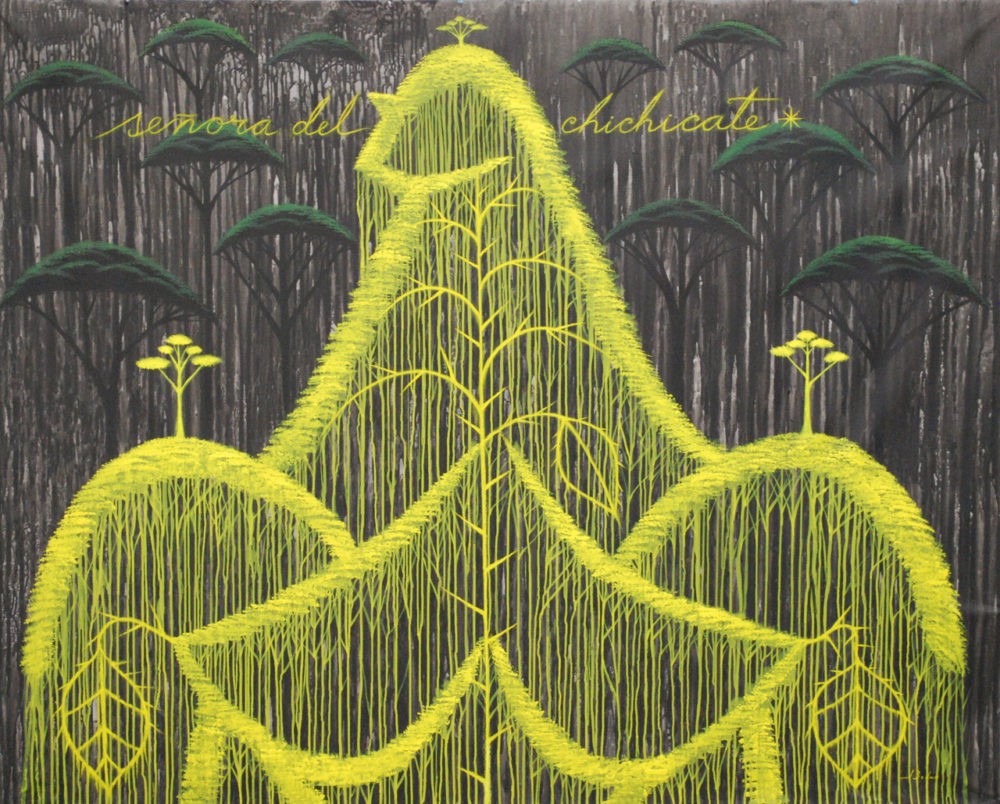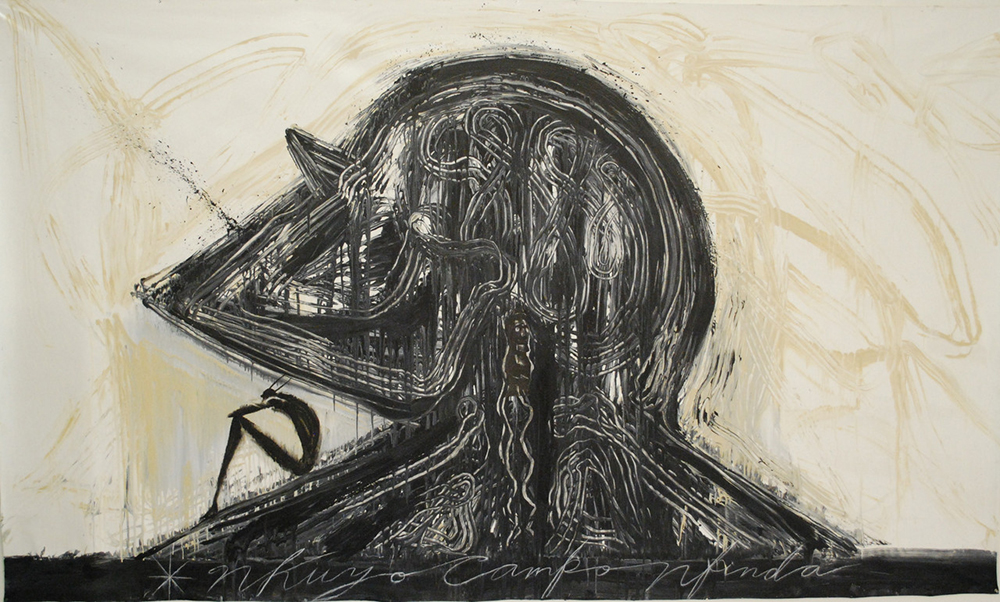Extensive travel, appreciation for tradition, and a unique approach to translating history have all shaped the career of José Bedia. Born in 1959 in Havana, Cuba, Bedia grew up surrounded by a rich culture which fostered a deep appreciation for the traditions and history that are passed from generation to generation. This interest infused his passion for the arts at an early age and he developed the formal techniques of drawing and illustration as a student at San Alejandro Academy. He later attended the prestigious Instituto Superior de Arte in Havana where his studies in tribal art, anthropology, mythology, and philosophy heavily influenced his creative process. Much of Bedia’s work is a fusion of the anthropological, religious, and cultural traditions of the people and places he has visited. His particular interest in the traditions of Native American and Afro-Caribbean cultures explores how the history of these societies affect us in the present and what can be learned from them.


Senora del Chichicate, by José Bedia; oil on canvas, 71 x 88 ½ inches; Courtesy of the artist
Bedia’s travels have taken him to countries throughout North and South America, Africa and Asia, where he collects stories and oral traditions from those whom he meets. He then infuses his work with this knowledge, interpreting a seemingly foreign culture into something familiar to him. Bedia’s art finds the connections between cultures and time periods that link all humans together. Human representations in Bedia’s work are often featureless and have no distinguishable characteristics, such as the figures in Presentacion de un Numen. This technique allows the viewer to imagine themselves as the figure and infuse the work with their own personal interpretation and history. Bedia often elects to paint directly onto his chosen surface with his hands, furthering the connection between the artist, the materials and the finished product. Viewers can see this in Nkuyo Campo Nfinda where Bedia’s handprints are clearly visible in the modeling of the figure’s head.

José Bedia moved to Miami, Florida in 1993. His work has been featured in private and public collections around the world, including the Museo Nacional Palacio de Bellas Artes in Havana, The Metropolitan Museum of Art in New York, The Whitney Museum of American Art, The Guggenheim Museums, Tate Modern in London and the Pérez Art Museum in Miami.
—Amanda Breen, Membership Manager, Gibbes Museum of Art
This is one of six posts covering the 2016 finalists for the 1858 Prize for Contemporary Southern Art. The winner will be announced on August 15, 2016.
Top image: Vinculo en Azul, 2013, by José Bedia; mixed media on paper; 47 ½ x 94.5 ½ inches; Courtesy of the artist
Published July 21, 2016

